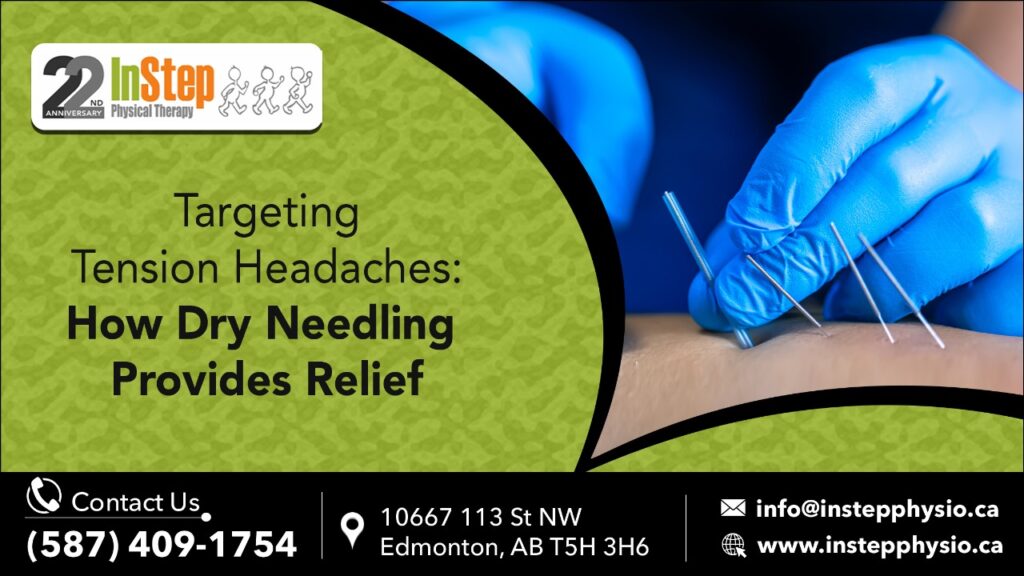Extracorporeal Shock Wave Therapy, otherwise known as ESWT Shockwave therapy, has been gaining attention as a potential treatment for various musculoskeletal conditions, including knee joint osteoarthritis.
As the prevalence of knee osteoarthritis continues to rise, especially among the aging population, the application of ESWT shockwave therapy in Edmonton offers a promising alternative to traditional treatments, providing hope to those looking for relief from joint pain and aiming to enhance their quality of life.
Shockwave Therapy for Knee Osteoarthritis
Pain Reduction Mechanism
Nerve Stimulation
- Analgesic Effects: Shockwave therapy primarily works by stimulating peripheral nerve fibres in the knee area. This stimulation alters the way pain signals are communicated to the brain, effectively reducing the perception of pain.
- Pain Signal Disruption: By targeting these nerve fibres, shockwave therapy disrupts the normal pain signals, resulting in significant pain relief for individuals suffering from knee osteoarthritis.
Gate Control Theory
- Non-Painful Input: According to the Gate Control Theory, non-painful input can close the neural “gates” that allow painful input to reach the central nervous system.
- Activation of Nerve Fibers: Shockwave therapy is believed to activate non-painful nerve fibres, which help to disrupt the transmission path of pain signals, providing relief from knee pain.
Tissue Healing
Microtrauma and Repair
- Controlled Microtrauma: The delivery of shockwaves induces controlled microtrauma to the knee tissues, a critical mechanism that stimulates the body’s intrinsic repair mechanisms.
- Metabolic Activity: This controlled injury increases metabolic activity around the knee, promoting the natural healing processes and aiding in tissue repair.
Neovascularization
- Formation of New Blood Vessels: Neovascularization, or the formation of new blood vessels, is necessary for the repair and regeneration of damaged knee tissues.
- Enhanced Circulation: Shockwave therapy boosts blood flow, which is crucial for supporting these repair processes, helping to remove pain-inducing metabolites and deliver essential oxygen and nutrients to the knee.
Growth Factor Release
- Stimulation of Growth Factors: Shockwave therapy promotes the release of various growth factors, including eNOS, VEGF, and PCNA. These growth factors are vital for healing, as they stimulate endothelial cells and enhance the blood supply to the affected knee area, accelerating the recovery process.
Reduction of Inflammation
- Anti-Inflammatory Effects: The shockwaves modulate inflammation by breaking down the inflammatory mediators that contribute to knee swelling, pain, and joint dysfunction. By reducing inflammation, shockwave therapy can decrease pain and improve joint mobility.
Types of Shockwave Therapy
Focused Shockwave Therapy
- Deep Tissue Targeting: Focused shockwave therapy uses single acoustic waves concentrated at a high energy level, which allows them to penetrate deeply into the tissues. This type is particularly effective for targeting specific, localized areas of pain and tissue damage within the knee joint.
- Precision Treatment: The ability to precisely target the deep layers of tissue makes focused shockwave therapy suitable for reaching and repairing the deep-seated osteoarthritic changes in the knee joint, especially in more advanced cases of osteoarthritis.
Radial Shockwave Therapy
- Broad Area Coverage: Radial shockwave therapy emits shockwaves that spread out radially, covering a larger treatment area. This type is less focused but is excellent for treating larger areas of pain and inflammation, providing a more generalized therapeutic effect.
- Surface and Subsurface Treatment: While radial shockwaves are less penetrative compared to focused shockwaves, they are effective in treating the superficial to mid-depth areas, which is suitable for cases where pain and inflammation are spread over a larger area around the knee.
Treatment Protocol
- Initial Assessment: A physiotherapist or medical professional will evaluate the patient’s knee condition, including the severity of osteoarthritis and specific symptoms, to tailor the shockwave therapy accordingly.
- Session Duration and Frequency: Each shockwave therapy session typically lasts between 5 to 10 minutes. The total number of sessions may vary, but patients often receive 3 to 6 sessions at weekly intervals, depending on their response to the treatment.
- Application: During the procedure, a device is used to apply shockwaves directly to the knee area. A gel is applied to the skin to facilitate the efficient transmission of acoustic waves.
Benefits of Shockwave Therapy for Knee Osteoarthritis
Non-Invasive Treatment Option
- No Surgical Risks: Shockwave therapy is administered externally, which means it does not involve surgical risks such as infections, bleeding, or prolonged hospital stays.
- No Anesthesia Required: Unlike many invasive procedures, shockwave therapy does not require anesthesia, making it suitable for patients at higher risk from anesthesia due to other medical conditions.
Safety and Efficacy
- High Safety Profile: Shockwave therapy in Edmonton is known for its high safety profile. The risks with this treatment are minimal, especially when compared to surgical options, which often come with potential complications and side effects.
- Effective Pain Relief and Mobility Improvement: Clinical studies and patient reports indicate that shockwave therapy can significantly reduce pain and improve joint mobility in individuals suffering from knee osteoarthritis. This improvement is attributed to the therapy’s ability to induce natural healing processes within the body.
Rapid Relief and Recovery
- Immediate Symptom Improvement: Many patients report a noticeable improvement in symptoms, like pain reduction and increased joint mobility, shortly after commencing treatment.
- Cumulative Benefits: While immediate relief is possible, the benefits of shockwave therapy are often cumulative, with symptoms continuing to improve throughout several treatments.
A New Horizon for Knee Osteoarthritis Relief
In summary, shockwave therapy represents a compelling approach to managing knee osteoarthritis. At In Step Physical Therapy in Edmonton, this ESWT shockwave therapy treatment is being utilized to explore new pathways for alleviating joint pain and enhancing mobility for those affected by this chronic condition.
In Step Physical Therapy provides expert care in this field, employing shockwave treatments that have shown promise in reducing pain and improving function.
If you are curious about the effectiveness of shockwave therapy for knee osteoarthritis or are seeking alternative treatment options, consider reaching out to us for shockwave therapy in Edmonton. Take action today and inquire how shockwave therapy could be integrated into your treatment plan.



